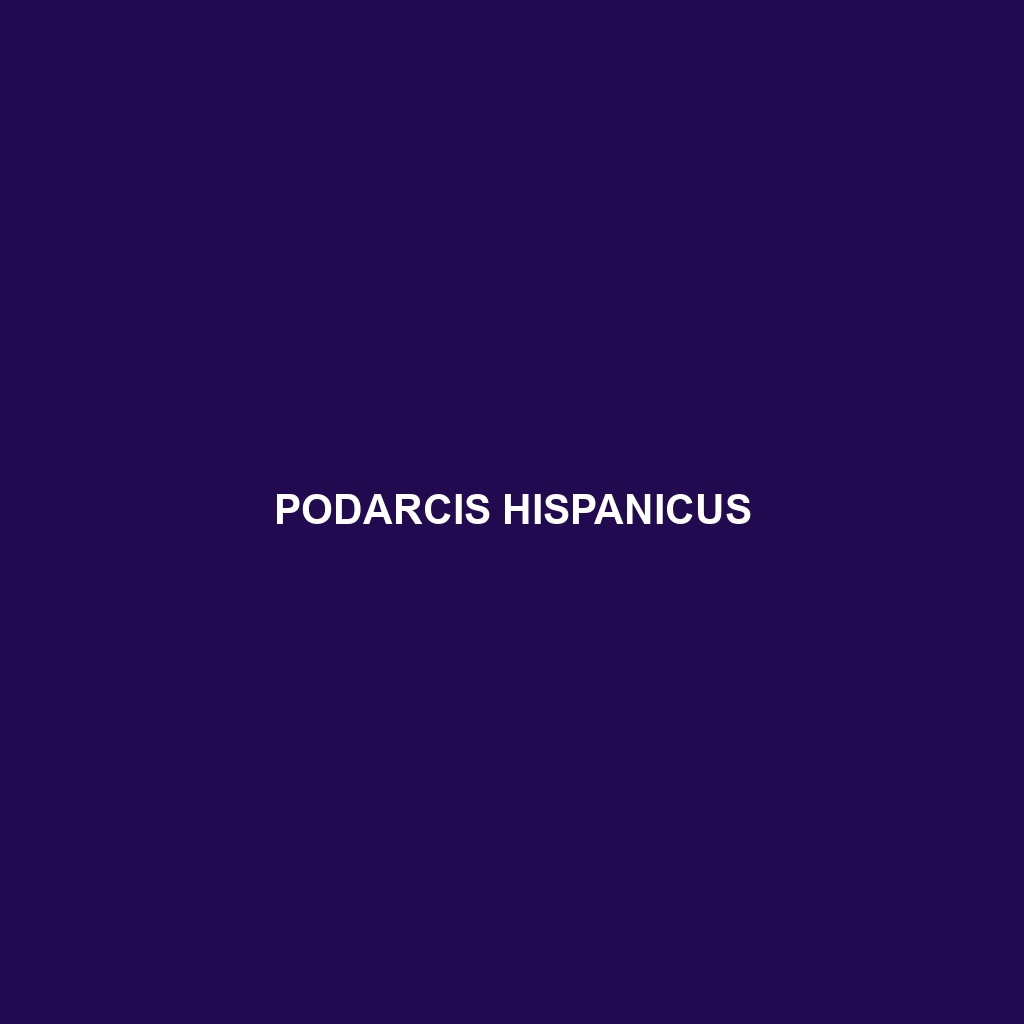Common Name
Podarcis hispanicus
Scientific Name
Podarcis hispanicus
Habitat
Podarcis hispanicus, commonly known as the Iberian wall lizard, thrives in diverse habitats across the Iberian Peninsula. This species is predominantly found in warmer, temperate regions, favoring areas with moderate climate and ample sunlight. The Iberian wall lizard occupies environments ranging from rocky outcrops, open grasslands, and scrublands to low shrub forests. Additionally, it can be spotted in human-altered landscapes such as gardens and parks, which offer sufficient shelter and basking opportunities. Found primarily in countries like Spain and Portugal, these lizards adapt well to both coastal areas and inland regions, showcasing their versatility in habitat selection.
Physical Characteristics
The Iberian wall lizard exhibits distinct physical characteristics that set it apart from other lizard species. Typically, it measures between 6 to 9 inches (15 to 25 cm) in total length, including its tail. This species displays a vibrant coloration that varies geographically, including shades of green, brown, and grey, often adorned with black spots or stripes for better camouflage against predators. One of the most striking features of Podarcis hispanicus is its relatively long and slender body, complemented by a long, tapering tail that aids in balance and escaping threats. Males are often notably larger and more colorful than females, particularly during the mating season, showcasing their bright hues to attract potential mates.
Behavior
Podarcis hispanicus is known for its active and agile behavior, often seen basking in the sun or darting quickly among rocks and vegetation. These lizards are diurnal, meaning they are primarily active during the day. They exhibit a range of social interactions, especially during the breeding season when males engage in displays to establish territory and attract females. Mating rituals include head-bobbing, color displays, and chase behaviors that highlight the males’ fitness. While they are generally solitary creatures, lizards may tolerate the presence of others in resource-rich habitats. In terms of locomotion, they are adept climbers and can often be seen scaling walls and trees with ease.
Diet
Podarcis hispanicus is classified as an insectivore, principally feeding on various insects and other small invertebrates, including beetles, ants, and caterpillars. While their diet is predominantly composed of protein-rich sources, they are also known to consume vegetation occasionally, demonstrating some omnivorous tendencies. The foraging behavior typically involves searching among rocks, leaf litter, and grass where prey is abundant. Their sharp eyesight and quick reflexes enable them to effectively capture prey, which supports their energetic lifestyle in the wild.
Reproduction
The reproductive cycle of Podarcis hispanicus generally occurs in the spring and early summer months, coinciding with warmer temperatures and increased activity levels. Mating takes place shortly after the males establish territories, with the female laying clutches of 3 to 10 eggs in loose, sandy soil or under debris. The gestation period typically lasts between 6 to 8 weeks, depending on environmental conditions. After laying eggs, females show no parental care; instead, they rely on the offspring’s instinct and ability to fend for themselves shortly after hatching. The young lizards are born fully formed and are independent from the moment they emerge from their eggs, ready to embark on their survival journey.
Conservation Status
Currently, Podarcis hispanicus is classified as Least Concern on the IUCN Red List, indicating that this species is relatively stable and not facing immediate threats of extinction. However, habitat destruction and urbanization pose potential risks to their populations, as natural habitats are replaced with urban landscapes. Conservation efforts are essential to monitor their populations and maintain habitat integrity, ensuring that the Iberian wall lizard continues to thrive in its native ecosystems. Community awareness and habitat protection initiatives can play a vital role in safeguarding this species for the future.
Interesting Facts
One fascinating aspect of Podarcis hispanicus is its remarkable ability to regenerate its tail after losing it to evade predators—a characteristic that aids in its survival. Additionally, these lizards exhibit a wide range of color morphs across different regions, which not only serves as a defense mechanism but also impacts their mating success. Interestingly, Podarcis hispanicus displays a unique head-bobbing behavior during courtship, which is both a communication method and a way to assert dominance among males.
Role in Ecosystem
Podarcis hispanicus plays a critical role in its ecosystem, serving as both a predator and prey within its food web. As insectivores, they help control insect populations, contributing to the overall health and balance of their environment. Additionally, they are a food source for various birds, mammals, and snakes, highlighting their importance in maintaining the biodiversity of the regions they inhabit. Through their activities, they stimulate the soil and contribute to the dispersal of plant seeds, further supporting the ecological dynamics of their habitats.
